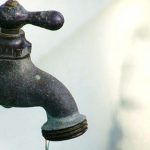Water scarcity is a deeply gendered issue that disproportionately burdens women, particularly in regions like Pakistan. Over a year ago, Pakistan made global headlines as catastrophic flooding tore through the country, resulting in displacing over 33 million people and unimaginable damage. After flooding destroyed villages and critical infrastructure, millions now face either unsafe drinking water or live in severely water-scarce regions. The climate change-induced water insecurity has led to other social crises that often go unnoticed. It has heightened the vulnerability of women to gender-based violence as they strive to secure an adequate water supply for their households.
The Global Water Crisis
In 2020, Germanwatch published a report that listed Pakistan as the 5th most susceptible nation to climate change. One of the several consequences of the rapidly changing climate in the country is water scarcity.
This dire situation is echoed globally, as evidenced by a recent poll conducted by One Young World, a community of over 17,000 young leaders and ambassadors. Its Global Consultation Process showed that 33% of 1,500 respondents from 160 countries have experienced problems accessing clean water at least once a month, while 55% experienced problems accessing clean water at least once a year. According to a 2023 UNICEF-WHO report looking at water issues with special focus on gender, in seven out of ten households without water supplies on the premises, women and girls are primarily responsible for collection.
By: Nida Shaikh







